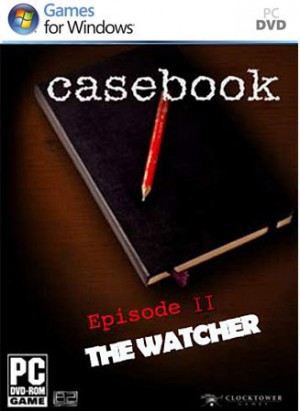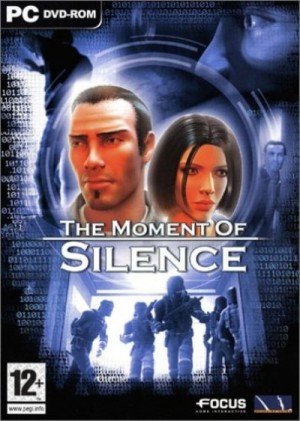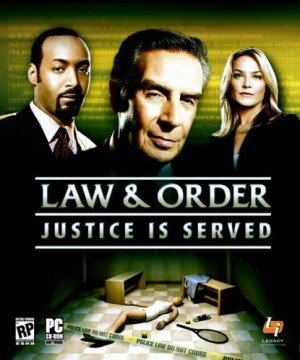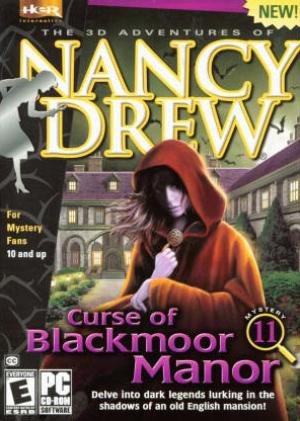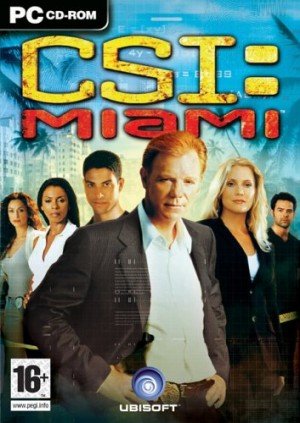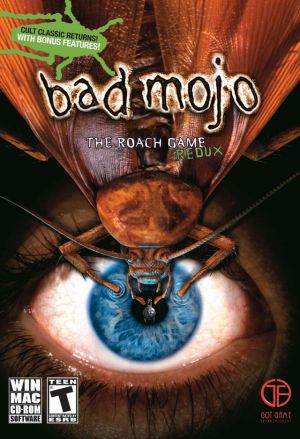Review for Casebook: Episode II - The Watcher
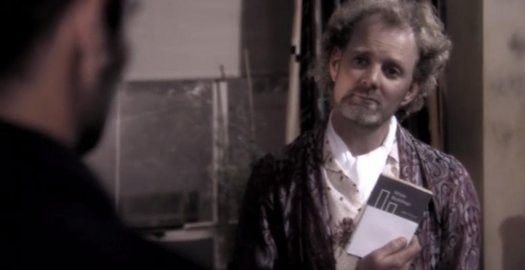
Since adventure games are often compared to movies or novels, thanks to their emphasis on story and characters, I guess it’s pretty safe to draw a parallel between episodic adventures and TV series. In both cases, the continuity is guaranteed by recurring elements such as supporting characters and established locations, while on the other hand each episode can focus on a distinct storyline and maybe even a different setting, without losing sight of the larger picture. Critics used to be nitpickingly demeaning toward TV series and it was only relatively recently that they started watching them without prejudice, maybe when they realized that many shows had better writing and direction than most Hollywood flicks. Likewise, episodic adventure games are really starting to demonstrate that briefer isn’t a synonym of weaker, and that it doesn’t necessarily take twenty or more hours to tell a riveting story. If all these comparisons are true, well, I really need to purchase a TiVo, because now that I’ve played The Watcher, I know for sure that I can’t miss a single episode of Casebook!
This compelling crime series, from independent New Zealand developer Areo, started off with a very promising pilot: Kidnapped introduced James Burton, a rough detective with a knack for thorny cases and a penchant for vanilla perfume, while casting us in the playable role as his silent field assistant. At the end of the first investigation, we were called to the Skylark Apartments for what superficially seemed like another routine inquiry, and this is right where Episode II picks up. Francis Salt, a young archaeologist on a sabbatical, plummeted from his window and crashed on a block of concrete, breaking his spinal column in three points. A dangerous mix of sedatives and antidepressants found in his blood stream, it seems obvious that Salt killed himself. Or is it? Is it true what his fellow tenants say about him, that he was a freak? Was he really spying on them? And what about a report he filed weeks before, stating that he was being stalked? Like Fox Mulder would say, “The truth is out there”, and it’s up to Burton and his assistant to unveil it.
The plot of The Watcher is not only more complex and intricate than Kidnapped, but also darker and more unsettling. The premise of the adventure may bear some resemblance to Alfred Hitchcock’s Rear Window, but the world of Skylark Apartments is far more sinister than the one James Stewart watches from his Greenwich Village flat. Once a mental institute, this huge, whitish prefab is now a shelter for pariahs and failures, paranoids and religious fanatics, all crammed together in an unhealthy, secluded environment. It doesn’t take much time for Burton to realize that the apartments are a tinderbox of suppressed violence, and a preliminary investigation is sufficient to spawn a jumble of unnerving questions: why is there cat blood on Salt’s mirror and ancient runes under his bed? Was he mad or did he really believe that a ghost inhabited the cavities of the walls, as he said in one of his videos? Did he jump or was he pushed?
The script does an amazing job of constantly revealing little tidbits of truth, without giving away a clear answer, keeping the suspense high. For example, the first things Burton wants are the little cassettes on which Salt registered his thoughts before scattering them across his apartment in a rush of paranoia. Each video slowly but steadily unfolds the backstory of Salt and his neighbours, while purposely leaving doubt about the believability of the man and his ramblings. It’s only during the second day of investigation that a bigger picture starts to form and things are really set into motion. From that moment on, the labyrinthine, unpredictable plot and clever writing kept me constantly beguiled and unable to quit playing, thanks to an almost perfect blend of drama, mystery and hard-boiled sarcasm.
Like in every good TV series, even a brilliant plot and excellent writing are not going very far without a good cast of characters, and fortunately The Watcher doesn’t disappoint. Returning from the first episode, lab technician Pete often serves as comic relief, with his witty comments and sarcastic remarks about every useless photograph the player submits to him. The crew from the police department is enriched this time around by Anna Henrickson, a beautiful, confident agent with a vast knowledge about criminal psychology and a tongue-in-cheek relationship with Burton. But it’s the Skylark tenants that deserve greater praise: from the chain-smoking Beryl Shure, hot-tempered manager of the apartments, to Grib, a deluded ex-choir boy with a predilection toward mannequins, the inhabitants are a wonderful group of unusual suspects. Honorable mention goes to Francis Salt, the paranoid victim, and Marlon Hapman, a sociopathic painter who prefers the company of books instead of men, and quotes with fancy affectation, much to Burton’s bewilderment, authors like Harold Hart Crane, an American hermetic poet, and Alexis de Tocqueville, French philosopher and fervent supporter of the United States’ democracy.
Not to be outdone by the excellent supporting roles, however, is James Burton himself. I’ve left him until last because he’s really in a league of his own: sharp-witted and instinctive, the detective can at times be charming and delicate or rough and tough like a PI sprung from the pen of Ellroy. In this episode, we get a glimpse into his lonely private life and are given a few hints about a darker side of his personality, a sort of obsession that drives him. Burton isn’t the playable character but he is the real protagonist, and Casebook manages to strikingly blend the feeling of immersion typical of first-person adventures with the strong characterization one usually finds in third-person games.
Fortunately, the acting is solid enough to support the characters, and the top-notch cinematic direction enhances the experience: unconventional camera angles, frequent use of wide-angle lens, long dollies and panoramic views are just a few of the techniques employed by the directors to concoct the right atmosphere. There is a particular location, a walled-off hideaway, where all these gimmicks work together to create a really unnerving feeling: the place is dark, scarcely illuminated by a dusty porthole; the walls are covered by graffiti, strange marks and mathematical formulas; the hand-camera shakes upon entering the shelter, intensifying the impression of dizziness due to the lack of oxygen, and the musical score becomes gloomy and rasping. The other locations – from Salt’s tidy apartment to a burned room full of broken, blackened furniture – sport equally lavish care and the FMV cutscenes are amongst the best ever seen in an adventure game. They not only display a professional realization and stylish execution, but also manage to remarkably use oft-misused techniques, such as slow motion, split-screen and reverse shots.
Like in the first episode, the gameplay is divided into three distinct segments, each corresponding to a diverse style of playing. During the exploration phases, you’ll have to scour the locations searching for material evidence and clues. Then you’ll have to analyze your findings in search of DNA samples, chemical reagents and well-hidden traces, at which point you must organize your clues in the Evidence Folder, making links and connections to verify your conclusions. The first two phases have been greatly improved over the series debut. Exploration now follows a more logical, less arbitrary path and the option to move back and forth between different crime scenes adds a welcome freedom of investigation. You will still have to photograph the significant evidence, which is sometimes very small and overly difficult to spot, but your objectives are considerably clearer. In the first game, Burton would ask for something generic like “proof of the victim being elsewhere”, but now his requests are more focused to allow a fuller immersion in our forensic role. For example, from the graffiti in the hideaway, he will ask for photographs of any piece of relevant scribbling we can find. I found it really enjoyable to sift throught the ramblings on the wall in search of important information, because not only does this process feel real, it also requires some serious thinking from the player.
Analyzing the evidence is once again done with the aid of an high-tech computer, which immediately transfers the submitted data to Pete for scientific examination. Like in the first game, this segment is conducted through the in-game computer interface, which results in a series of minigames. In addition to the processes already seen previously, like footprint analysis and chromosome separation, now you’ll have to clean and adjust ruined videotapes, use a microscope to locate chemical reagents, examine and compare building plans and decrypt coded messages. It’s great to see that the developers listened to some of the complaints about the first episode and added a greater variety to these minigames. They also raised the bar in terms of complexity: without being frustrating, the minigames are now more challenging and engaging. At one point you will have to virtually simulate Salt’s descent: considering his landing and his injuries, you must figure out not only if the fall started from his window or the rooftop, but also the power of his leap, thus corroborating the suicide theory or denying it in favor of a suspicion of murder. This particular minigame requires deductive reasoning, and such new additions make the case feel less like a casual game and more like a coherent process of forensic investigation.
The Evidence Folder is the only thing that remains completely untouched from Kidnapped, leaving it the weakest link in the investigative chain. The game still highlights the linkable elements and the player only has to select the correct pair of evidence without much thinking. Considering the improvements made to the rest of the gameplay, I surely hope that the third episode will bring us some adjustments to this last segment, emphasizing the challenge of real detective guesswork.
Overall, the Casebook series is very clear in its purpose: it wants to be part game and part film, an interactive movie where the natural flow of the story isn’t interrupted by arbitrary puzzles and obstacles. In that regard the second episode succeeds masterfully, and it is so gripping that I really found myself incapable of stopping. I finished the game in nearly four hours of uninterrupted play, and when I reached the end I was disappointed, not because the finale was unsatisfying but because I was left craving more. Like a tantalizing TV show, The Watcher manages to conclude the current case and yet still end with a breathtaking cliffhanger promising more to come. The trailer for the next episode, Snake in the Grass, is the bittersweet icing on the cake: if Casebook had been a TV series, I’d already be searching the Internet for advance spoilers.
While it’s expected to appear on other download portals soon enough, the new case is currently available only through digital distribution from the game’s official website. It is not necessary to have played Kidnapped to fully enjoy this second installment, but I strongly recommend playing them in sequence to get acquainted with the characters and the over-arching series plot. It’s true that the light gameplay may disappoint the more hardcore puzzle fans, but anyone who appreciates interactive movies, story-driven adventures and mystery/noir games will certainly be satisfied. There’s plenty to enjoy in this growing, tantalizing series, so take your magnifying glass – oops, hi-tech digital camera, and remember: as detective Burton likes to say, “There’s no such thing as too much evidence”!


